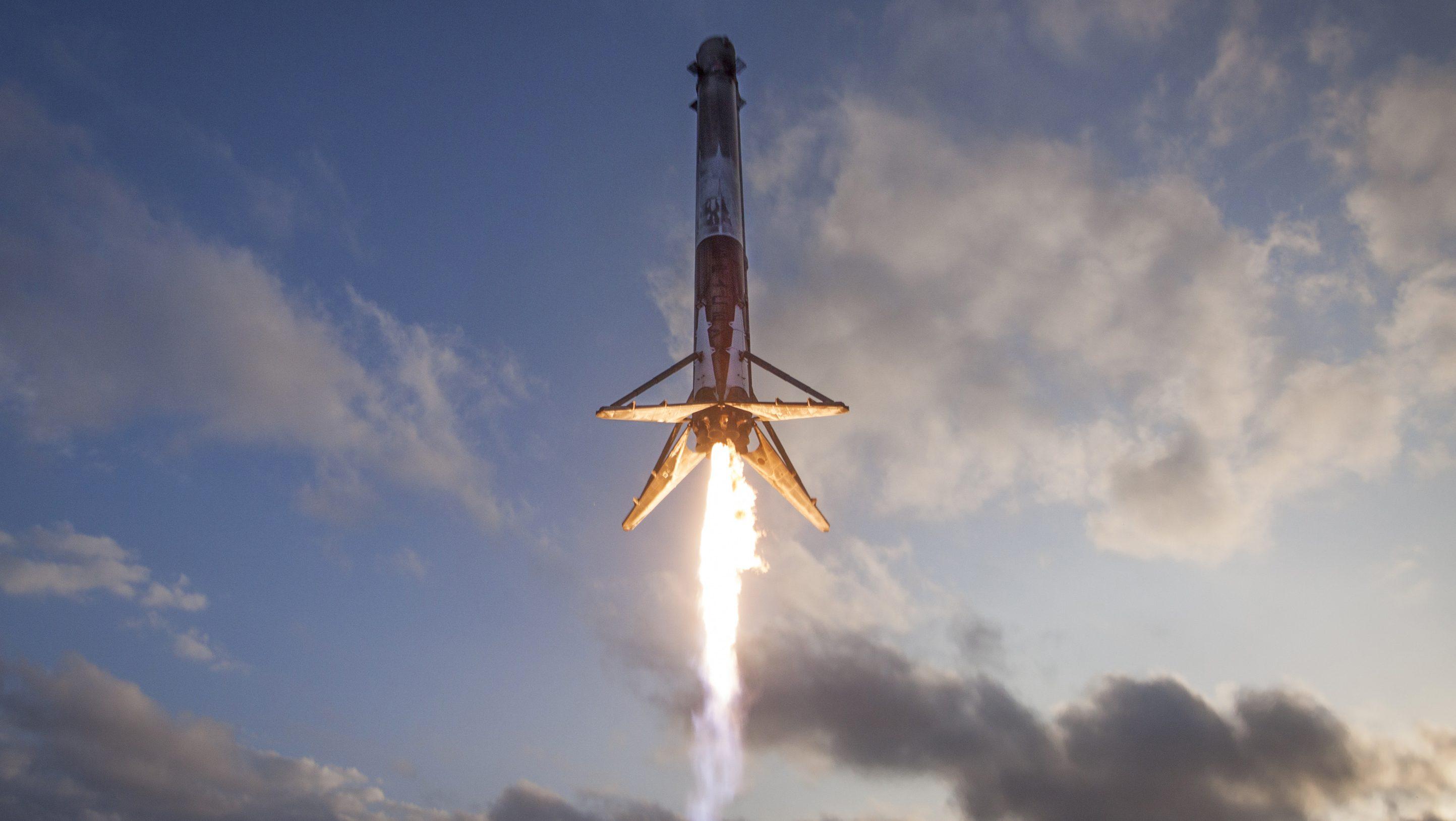
Photo from SpaceX .
Physicist Richard Feynman returned over and over to an idea that drove his groundbreaking discoveries. His approach was documented by his Caltech colleague David Goodstein in the book Feynman’s Lost Lecture about physics classes Feynman taught in the 1960s:
Once, I said to him, “Dick, explain to me, so that I can understand it, why spin one-half particles obey Fermi-Dirac statistics.” Sizing up his audience perfectly, Feynman said, “I’ll prepare a freshman lecture on it.” But he came back a few days later to say, “I couldn’t do it. I couldn’t reduce it to the freshman level. That means we don’t really understand it.”
Feynman didn’t mean all human knowledge must be distilled into an introductory college course. His point was that we need to build our grasp of science and technology from the ground up if we are to master it, not to mention reimagine how it works. Feynman was famous as a student for redoing many of physics’ early experiments himself to build a foundational understanding of the field. By mastering these first principles, Feynman often saw things that others did not in quantum mechanics, computing, and nuclear physics, earning him the Nobel Prize in 1965.
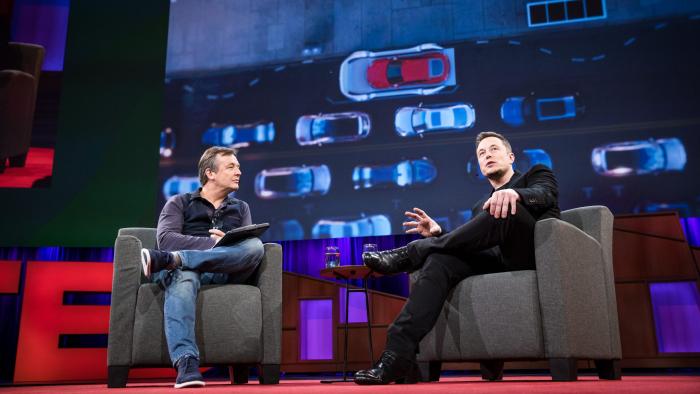
Musk runs the numbers at the TED conference on April 28. Photo by Bret Hartman / TED .
Elon Musk’s companies approach problems in a similar way. Whether it’s reaching Mars or boring tunnels through the earth, the CEO of Tesla and SpaceX loves to talk about basic math. On investor calls and press conferences, Musk often muses on the addition, subtraction, and multiplication of what he’s trying to do.
Take The Boring Company, Musk’s latest “hobby” aimed at banishing Los Angeles’ snarled traffic. On Apr 28, at a TED conference, Musk explained his proposal to deploy continuous tunnel-boring machines that link cities through a network of deep underground tunnels. The company’s promotional video shows vehicles zipping along city streets before stopping on car-sized elevators built into the pavement. Underground tracks whisk them off to their destination at speeds of more than 130 miles per hour (200 kilometers per hour) before depositing them back at the surface to finish the last leg of their journey. He wants to do all this for one-tenth of today’s costs compared to the estimated $1 billion per mile price tag for Los Angeles’ new subway extension.
To illustrate his idea, Musk did some back-of-the-envelope calculations outlining “a straightforward series of steps:”dig narrower tunnels with faster machines that drill continuously rather than the slow, manual and often inefficient methods used today. His full description 1 of the math is summarized below:
"If you just do two things you can get to approximately an order of magnitude improvement, and then go beyond that. The first thing to do is cut the tunnel diameter by 2 times or more. A single road tunnel has to be 26 to 28 feet in diameter to allow for crashes and emergency vehicles and sufficient ventilation for combustion engine cars.
But if you shrunk it to 12 feet, what we're attempting, which is plenty for a skate to get through, you drop the diameter by a factor of two and the cross-sectional area by a factor of 4. The tunnel costs scales with the cross-sectional area. That's roughly half an order of magnitude improvement right there.
Then, tunneling machines tunnel half time and then stop and the rest of the time is reinforcements for the tunnel walls. If you design the machine to do continuous tunneling and reinforcing, that will give you a factor of two improvement. Combine that, and it's a factor of 8. Also these machines are far from being at their power or thermal limit. I think you can get a factor of two, maybe even four or five on top of that.
There’s a fairly straightforward series of steps to get somewhere in excess of an order of magnitude improvement in cost per mile. Our target actually is that we have pet snail named Gary from....Sponge Bob Square Pants. Gary is capable of going 14 times faster than a tunnel boring machine. We want to beat Gary."
First, dig a smaller tunnel. Replacing a typical subway tunnel (about 28 feet across) with one half that size (14 feet across) reduces the area by a factor of four (since area = π x radius2). Since tunnel costs are correlated with area, a $1 billion tunnel could now cost roughly $250 million.
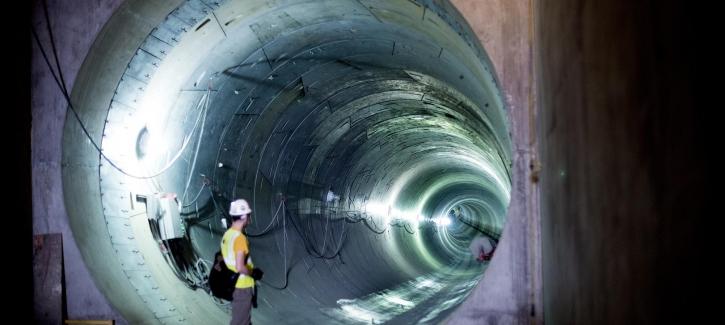
A San Francisco subway tunnel. Photo by Noah Berger / MTA .
Second, speed it up. Tunneling machines today work half the time and then stop for reinforcement of tunnel walls. Musk proposes continuous tunneling and reinforcing (which is not yet possible), cutting costs in half again. A hypothetical tunnel would then cost about $125 million.
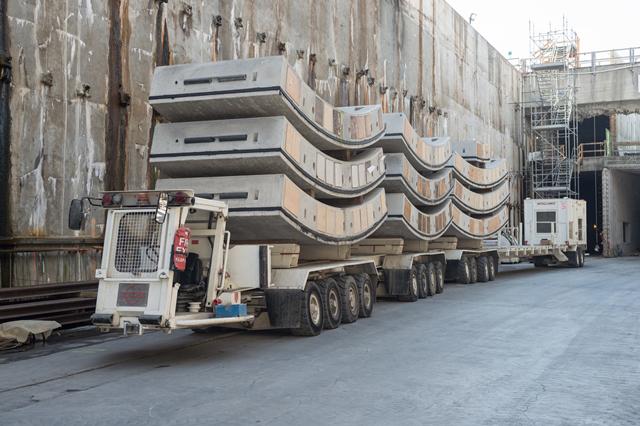
Tunnel segments for a Seattle highway tunnel. Photo from WSDOT .
Finally, drill faster. Today’s boring machines are nowhere near their “power or thermal limits.” That, he estimates, would cut costs by as much as five-fold. Now a $1 billion tunnel costs something more like $60 million (or even $25 million in an optimistic scenario).

Does it all add up? “Nothing is impossible, but all of it is very difficult,” says Gregory Hauser, a civil engineer at Dragados who recently managed the replacement of Seattle’s Alaskan Way Viaduct, the largest underground highway project in the US. “I think [The Boring Company] is on par with SpaceX.” Hauser said Musk’s calculations elide serious technical complexities, and today’s technologies are not up to the job. But after 40 years of incremental innovation, most of it from outside the US, “I’m all for it,” he said. “The industry needs new thinking and technology.”
Executing on these ideas will require the world’s most advanced engineering, but spotting unexpected solutions just takes an uncommon clarity of mind. It’s a trick Musk has repeated at each of his companies. Musk described an identical strategy 2 behind Tesla’s manufacturing technology at the company’s 2016 annual meeting: reconfigure today’s inefficient factories.
I actually think the potential for improvement in the machine that makes the machine is a factor of 10 greater than the potential on the car side. I think maybe more than a factor of 10. I’ve really come to appreciate that over the last two to three months when I’ve been on the production floor all the time and running production personally at a detailed level. I don’t even have a desk or an office Im just standing on the production floor….
You can think of its as designing a modern system on chip or computer…. There’s crazy potential for improvement here on production with significantly less en engineering effort we can make dramatic improvements in the machine that makes the machine. I think a lot of people will not believe us about this but I’m absolutely confident that this can be accomplished.
You design a factory like you design an advanced computer. Once you explain this to a first-rate engineer, the light bulb goes on…. They spend huge amounts of effort trying to get fractions of percent of improvement on the product itself but actually the same amount of effort yields orders of magnitude more results if you focus on building the machine the builds the machine.
Lot of engineers don’t realize this is possible. They think there’s like a wall. They’re basically operation according to these invisible walls and we’re in the the process of explains those walls don’t exist and I think it’s going to be pretty amazing.
“The most important point I want to make is [that] the true problem, the true difficulty, and where the greatest potential lies is building the machine that makes the machine. In other words, building the factory … like a product,” said Musk at the annual meeting (starting at 2:20), predicting a new factory would deliver a “ten-fold improvement” in productivity.
His solution? ”I do my favorite thing which is apply physics first principles,” he said. “It’s like the best tool possible.”
This time the factory was reduced to a different equation: output = volume x density x velocity. Need to bring down the cost of batteries? Fill as much of the factory’s volume possible with equipment. Instead of using 3% of the volumetric space, Tesla plans to use at least 30% to get more production per unit of space. Need to produce 500,000 cars per year rather than the 50,000 Tesla has managed so far? Speed up the assembly line by a factor of seven from its typical 0.2 meters per second to 1.5 meters per second. Then build factories as a series of mini facilities, each one iterating on the design of the last so incremental improvements can be rolled out to Tesla’s battery, solar panel, and car plants.
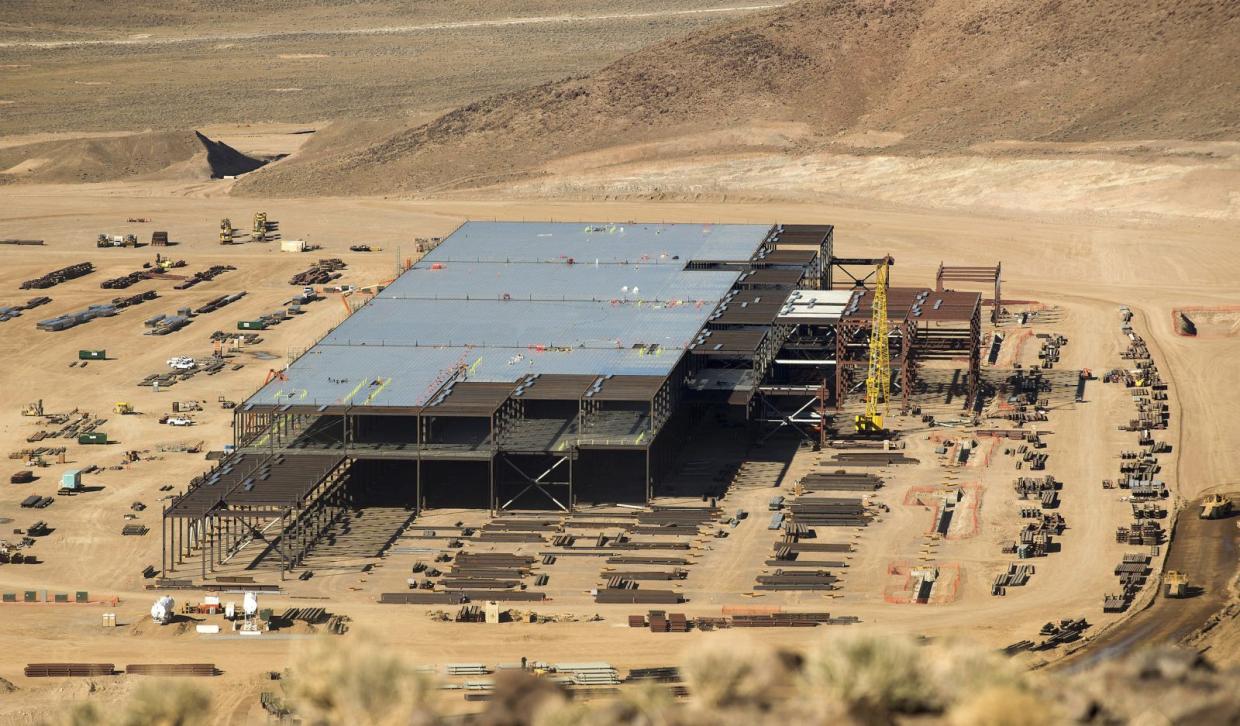
Building a better battery. Photo by Reuters/James Glover II .
SpaceX seems to have sprung from the same thinking. The moment of SpaceX’s conception is not documented, but Ashlee Vance’s book Elon Musk: Tesla, SpaceX, and the Quest for a Fantastic Future comes close. On a flight back from Moscow after the Russians dismissed Musk’s offer to buy retooled intercontinental ballistic missiles, Musk was furiously crunching numbers on his laptop. As the plane ascended, Vance recounted the moment when Musk’s companions on the flight, two aerospace engineers, first saw the spreadsheet laying out how he planned to build a cheaper, faster rocket:
Musk wheeled around and flashed a spreadsheet he’d created. “Hey, guys,” he said, “I think we can build this rocket ourselves.”
“We’re thinking, Yeah, you and whose fucking army,” [SpaceX founding team member Jim] Cantrell said “But, Elon says, ‘No, I’m serious. I have this spreadsheet.’” Musk passed his laptop over to [future NASA administrator] Mike Griffin and Cantrell, and they were dumbfounded. The document detailed the costs of the materials needed to build, assemble, and launch a rocket. According to Musk’s calculations, he could undercut existing launch companies by building a modest-sized rocket that would cater to a part of the market that specialized in carrying smaller satellites and research payloads to space. The spreadsheet also laid out the hypothetical performance characteristics of the rocket in fairly impressive detail. “I said, ‘Elon, where did you get this?’” Cantrell said.
Musk had spent months studying the aerospace industry and the physics behind it. From Cantrell and others, he’d borrowed Rocket Propulsion Elements, Fundamentals of Astrodynamics, and Aerothermodynamics of Gas Turbine and Rocket Propulsion, along with several more seminal texts. Musk had reverted to his childhood state as a devourer of information and had emerged from this meditative process with the realization that rockets could and should be made much cheaper than what the Russians were offering.
This is not to say Musk will realize his most ambitious goals: landing on Mars, electrifying much of the world’s transportation fleet, and accelerating the transition from a fossil-fuel to a carbon-free economy. But each is closer than most thought possible in such a short time. The seed of each idea was planted by calculating what physics dictates is possible, not extrapolating from the status-quo. This defined the arena of possibility using little more than high-school math.
Musk is trying to spread the word. He explained his thinking to Tesla’s shareholders as it applied to the design of the Gigafactory in 2016. Instead of extracting tiny gains in the design of the car (a highly-engineered product where most cost and material savings were squeezed out long ago), Musk turned his attention to the factory where he said the same amount of effort yielded an order of magnitude more results.
“Once you explain this to a first-rate engineer, the light bulb goes on,” said Musk. “Lot of engineers don’t realize this is possible. They think there’s like a wall. They’re basically operating according to these invisible walls and we’re in the process of explaining those walls don’t exist. And I think it’s going to be pretty amazing.”